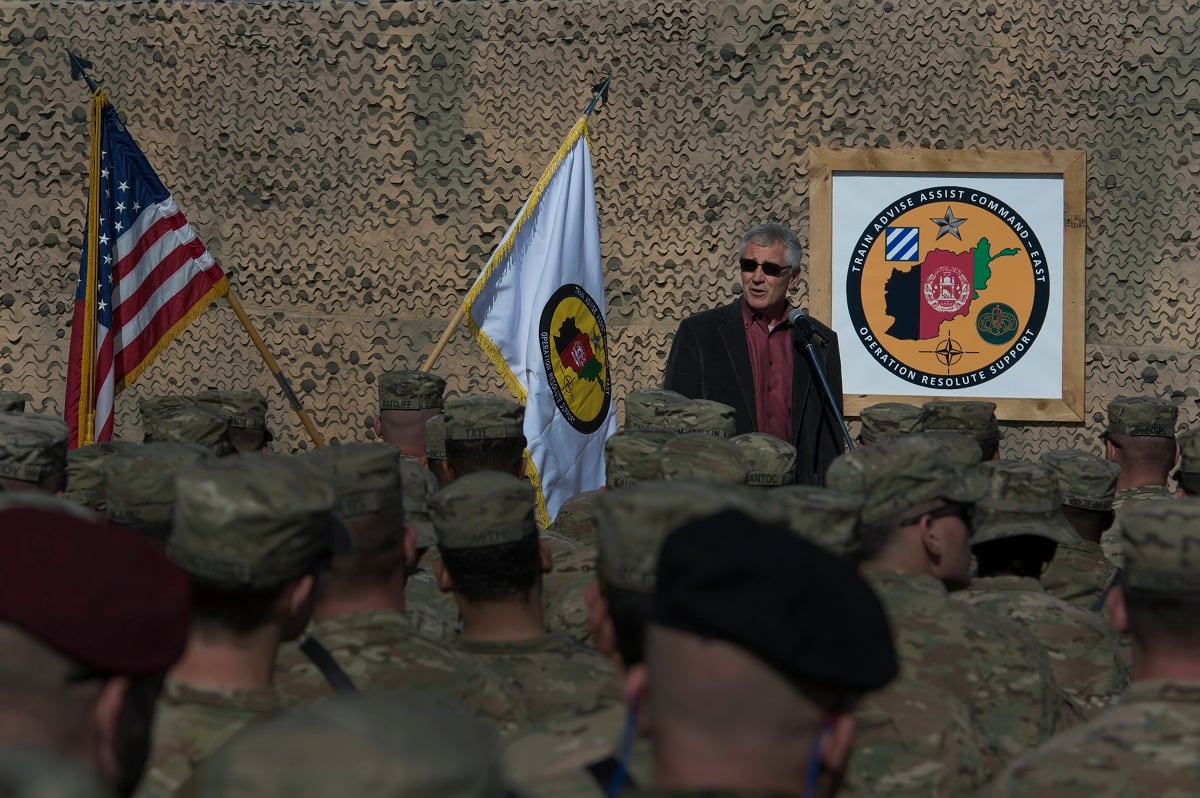WASHINGTON — The closer the U.S. gets to its original goal in Syria of defeating the Islamic State group, the murkier its end game. New layers of complexity are descending on a shifting battlefield, as demonstrated by a deadly barrage of American air and artillery strikes on a shadowy attacker.
The Pentagon insists it is keeping its focus on defeating ISIS, but Defense Secretary Jim Mattis said Thursday U.S.-backed fighters in eastern Syria faced a “perplexing” overnight assault by about 300 pro-Syrian government fighters whose nationalities, motives and makeup he could not identify. A number of U.S. military advisers were present alongside local allied forces, and the Americans led a punishing response that other officials said killed about 100 of the assailants.
Mattis asserted the episode was an aberration that should not be seen as an expansion of the U.S. war effort. But Trump administration critics disagreed. The Pentagon boss also dismissed any suggestion that Russia, the Syrian government’s most powerful military ally, had any control over the mysterious attacking force.
“I am gravely concerned that the Trump administration is purposefully stumbling into a broader conflict, without a vote of Congress or clear objectives,” said Sen. Tim Kaine, a Virginia Democrat, who has challenged the legal grounds on which American troops can operate in Syria for post-ISIS operations.
Mattis rejected Kaine’s suggestion the U.S. is being drawn into a broader war.
“It was self-defense,” he said. “We’re not getting engaged in the Syrian civil war.”
The Pentagon says there are about 2,000 U.S. troops in Syria. Many are operating with local allies, known as the Syrian Democratic Forces, in the eastern oil-producing Deir el-Zour region along the Euphrates River. A stronghold of Islamic State militants until late last year, the area was the group’s main source of oil revenue. U.S.-backed Kurdish-led forces have been competing for control of Deir el-Zour with Russian-backed Syrian troops that are reinforced by Iranian-supported militias.
This is essentially the Islamic State’s last stand in Syria, having ceded most of its Syrian and Iraqi territory over the past couple of years.
While Washington’s mission is to finish off ISIS and ensure it does not return, the U.S. also has a stake in stabilizing swaths of Syria. In that endeavor it is encountering friction with Turkey, a NATO ally that opposes any cooperation with Syrian Kurdish fighters. It sees them as an existential threat to Turkey.
Beyond fighting ISIS in its few remaining pockets of influence, the U.S. has been working in areas of Syria liberated from ISIS to restore basic services and set up interim governing structures until the war between Syria’s government and rebel groups can be quelled. Mattis said Thursday the goal is to create conditions for a U.N.-led political resolution, though there are no indications one could be achieved anytime soon.
Keeping U.S. forces on the ground in areas that President Bashar Assad’s government hopes to reclaim inherently increases the probability of more clashes. But the United States argues that if it were to pull out, a fight for control over these areas would ensue. Whatever group wins out — the government, rebels or extremists such as ISIS — would be far less equipped than the U.S. to maintain stability, the American argument goes.
RELATED

It was in this complex military and political environment that the pro-Assad fighters shelled a Syrian Democratic Forces headquarters about five miles east of the Euphrates in Khusham, Syria, late Wednesday. By crossing the river, the fighters would have violated a “deconfliction” agreement between Washington and Moscow, approaching U.S.-backed forces based near an oil field.
The motive for the attack remains a mystery, Mattis said, as is the makeup of the attackers.
“For some reason, pro-regime forces — and I cannot give you any explanation for why they would do this — moved against SDF positions,” he said. Mattis said U.S. special operations troops were present as advisers at the headquarters. No Americans were hurt.
The U.S. organized, armed and trained the Syrian Democratic Forces for its successful operations to rout IS from nearly all the territory it once held in eastern Syria
Lt. Col. Damien Pickart, a U.S. Air Force spokesman in the Middle East, said U.S. ground-based artillery and F-15E Strike Eagle jets retaliated. Other officials said the U.S. also used Air Force AC-130 gunships and Army AH-64 Apache attack helicopters to strike the pro-government fighters.
Mattis said the Russians appear blameless for the aggression. He said U.S. and Russian military officers spoke by telephone before and during the confrontation, and there is no indication the aggressors included Russian forces or a militia operating under Russian influence or control.
“You can’t ask Russia to deconflict something they don’t control,” he said.
Associated Press writers Lolita C. Baldor and Josh Lederman contributed to this report





